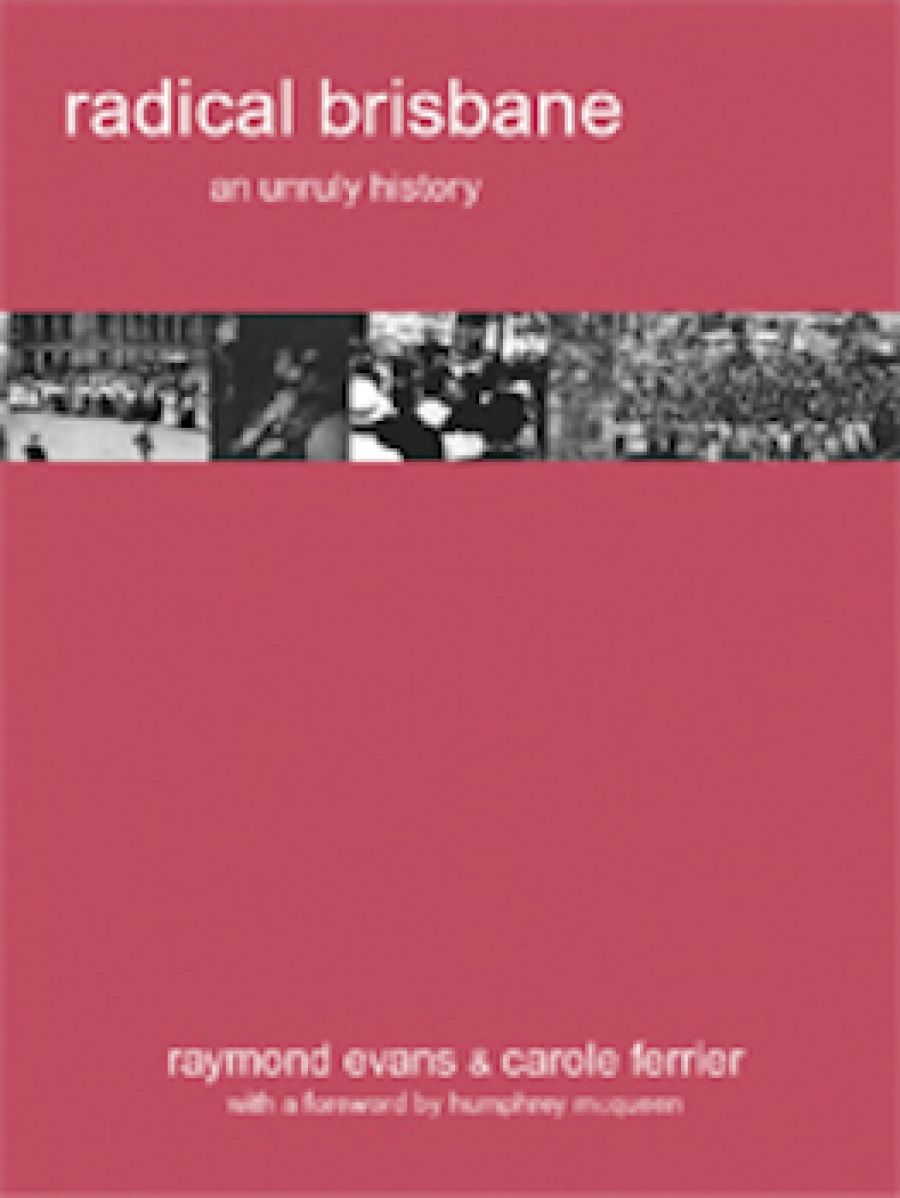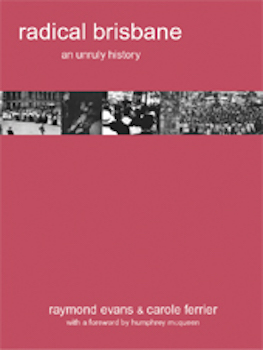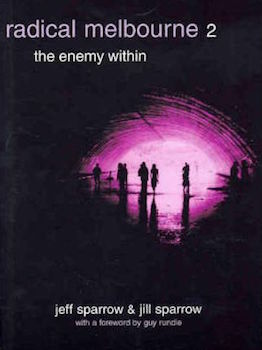
- Free Article: No
- Contents Category: Non-fiction
- Custom Article Title: Demolition of Dreams
- Review Article: Yes
- Article Title: Demolition of Dreams
- Online Only: No
- Custom Highlight Text:
Brisbane’s unruly rioters and Melbourne’s enemies within continue the Vulgar Press’s excellent series of city guides. By interpreting familiar places in Melbourne and Brisbane from within a tradition of left-wing activism, the guides emphasise a different environmental heritage. Where city planning seems bent on transforming daily life into those sanitised displays that can garner tourist dollars, these collections speak to far more challenging and imaginative traditions. Sadly, and this seems especially the case in Brisbane, the buildings around which radicals fought and dreamed have, for the most part, disappeared. Photographs in Radical Brisbane present the reader with bland offices, mundane glass and concrete façades and the occasional freeway flyover. Modern city planning has efficiently purged the landscape of any radical intrusion.
- Book 1 Title: Radical Brisbane
- Book 1 Subtitle: An Unruly History
- Book 1 Biblio: Vulgar Press, $50 pb, 329 pp
- Book 1 Cover Small (400 x 600):

- Book 1 Cover (800 x 1200):

- Book 2 Title: Radical Melbourne 2
- Book 2 Subtitle: The Enemy Within
- Book 2 Biblio: Vulgar Press, $50 pb, 251 pp
- Book 2 Cover Small (400 x 600):

- Book 2 Cover (800 x 1200):

The ‘radicalism’ of Brisbane can seem, to an outsider, difficult to comprehend. For in this collection, one site after another marks a spot on which the state beat down popular protest. Of the forty-nine sites that are analysed, three recall brutalities during the transportation era, and two, brutalities inflicted on those incarcerated at Boggo Road Gaol and on St Helena Island in Moreton Bay, where striking unionists were imprisoned in 1891. The editors go on to locate numerous bashings, the most infamous of which remains the 1948 police beating of Fred Patterson, the communist member of parliament. The book locates an irregular sequence of riots in Brisbane’s public spaces. Queensland’s police emerge as central actors at Eagle Farm racecourse in 1887, after the favourite was left at the start, at conscription and free speech demonstrations in Queen Street, at Festival Hall in the heyday of rock ‘n’ roll and at Caxton Street during the punk movement’s initial incarnation. While the collection pays due homage to the waterfront and the struggles of Brisbane’s wharfies, police officers figure more frequently in this collection than do any other unionised workforce.
The journey, through sites of bombings, bashings and street-corner bombast, does read like a history of the recurrent assertion of state power and the demolition of dreams, not all of them radical. The racist rioters of the 1880s, the proto-fascist militia of the 1930s and Irish besiegers of the Protestant Hall in 1900 force entry into Brisbane’s radical history. Fascinating as the sites of their rioting remain, it is difficult to discern what sense of radicalism nineteenth-century Irish nationalists, let alone militants inspired by American social credit campaigns, might share with, say, student Trotskyists in the 1960s. For the most part, it seems the radicals memorialised in this collection are Brisbane’s political failures, in a place that gave the world its first Labour government, as well as radical and successful social programmes lasting for much of the interwar era.
One undeniably successful grouping does emerge in this collection: the women’s movement, here associated with, among other sites, the Regatta Hotel. By chaining themselves to the Regatta’s bar foot-rail in 1965, two radical women doubled the number of Brisbanites able to enjoy the dubious privilege of drinking in a Queensland public bar. If the women’s movement can successfully incorporate itself into Brisbane’s most sophisticated locales and now stand at the centre of civic leadership, whilst in this tale remaining radical, then perhaps those other political movements grouped around Brisbane’s labour organisations ought to have figured more prominently. Sites of union campaigns, such as that sparked by the Electrical Trades Union at the Albion depot, so crucial to the massive strikes of 1984–85, might surely count as more radical than say the points at which American and Australian troops fought street battles in 1942. Obviously, there is a limit to what can be included in such a collection. At the very least, though, the Breakfast Creek Hotel deserved a listing as much as the Regatta. Appropriately, the site at which the book ends is Musgrave Park, a locale critical to the enduring cultural identities and political aspirations of both Aboriginal and other Brisbanites.
A suitably comedic tenor enlivens Radical Melbourne This collection concentrates on Melbourne over the last sixty years, so the editors are able to make fine use of personal recollections and photographs from the radicals themselves. The key players have aged just about as well as the sites of their radical youth and, for the most part, look back with candour and a wry detachment.
Perhaps their distinctive irony is best captured in the gargoyle carved by a self-ascribed ‘tradesman and Labor man’, which formed part of the 1992 refurbishment of St Patrick’s Cathedral. Tousle-haired, open-mouthed and energetic, the stone visage bears an unsettling resemblance to a familiar cartoon caricature of a vanquished premier. Brisbane’s unruly history, fascinating as are all the sites listed, could do with a leavening from such comic subversiveness – and might draw more consistently on the radicalism of the city’s tradesmen and Labor men.


Comments powered by CComment